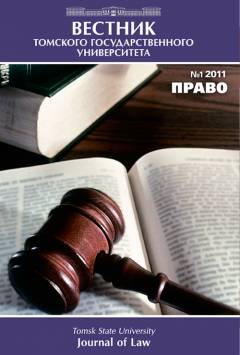Expert assessment of foreign models of federalism (comparative historical state analysis)
One of the most important research tasks when considering the forms of government is the structuring and subsequent comparison of federalism models. In this case, the core of the analysis should be the study of the degree of centralization or decentralization in the functioning of the state mechanism, the involvement of the center or entities in the regulation of various segments of public life. In 2019, the American journal Publius published the results of an international scientific project whose participants studied regulatory processes at the federal and regional levels of government in 6 typologically significant federations - the USA, Canada, Australia, Switzerland, Germany, and India. 22 segments of public life (related to the fields of external and internal life, defense, economics, social and cultural relations) were identified, and they were evaluated by experts in points on a scale from 1 to 7. On this rating scale, the maximum number 7 meant the highest degree of decentralization (i.e. full participation in the management of regional authorities), and the number 1 - the highest degree of centralization (i.e., exclusive participation in the management of the federal center). The indices of legislative and administrative regulation were differentiated: usually the second indicator is higher (i.e. closer to 7, because the federal center often delegates its executive functions to the subjects). The research materials show that the general vector of the development of the federation is the strengthening of their centralization. For example, for the USA, both indices changed from 6.05 to 2.95 and from 6.36 to 4.09, respectively. Common to the first settlement federations - the USA, Canada, Australia, is the transition to centralized regulation of agriculture, since the center had to encourage the settlement of vast territories. At the same time, in two European countries - Switzerland and Germany, as well as India, we would note more differences than similarities, since they belong to different cultural-civilizational and genesis types of federalism. If we talk about six federations in general, the sectors that are least centralized are education (school and higher), law enforcement, environmental protection, and the most centralized are external relations, money circulation, and defense. The project implemented by foreign experts is certainly useful and innovative. However, in the future, a more thorough historical and geopolitical typologization should be undertaken, a description of the formation of federal states and the stages of their development using traditional narrative sources is necessary.
Keywords
сравнительный федерализм, модели федерализма, экспертные оценки уровней государственного управления в федерациях, государственное регулирование со стороны федерального центра и субъектов в исторической динамике, современное состояние государственного регулирования в федерациях, comparative federalism, models of federalism, expert assessments of the levels of state administration in federations, state regulation by the Federal center and subjects in historical dynamics, the current state of state regulation in federationsAuthors
| Name | Organization | |
| Gulyakov Alexander D. | Penza State University | Comp-federalism@yandex.ru |
References

Expert assessment of foreign models of federalism (comparative historical state analysis) | Tomsk State University Journal of Law. 2020. № 35. DOI: 10.17223/22253513/35/4